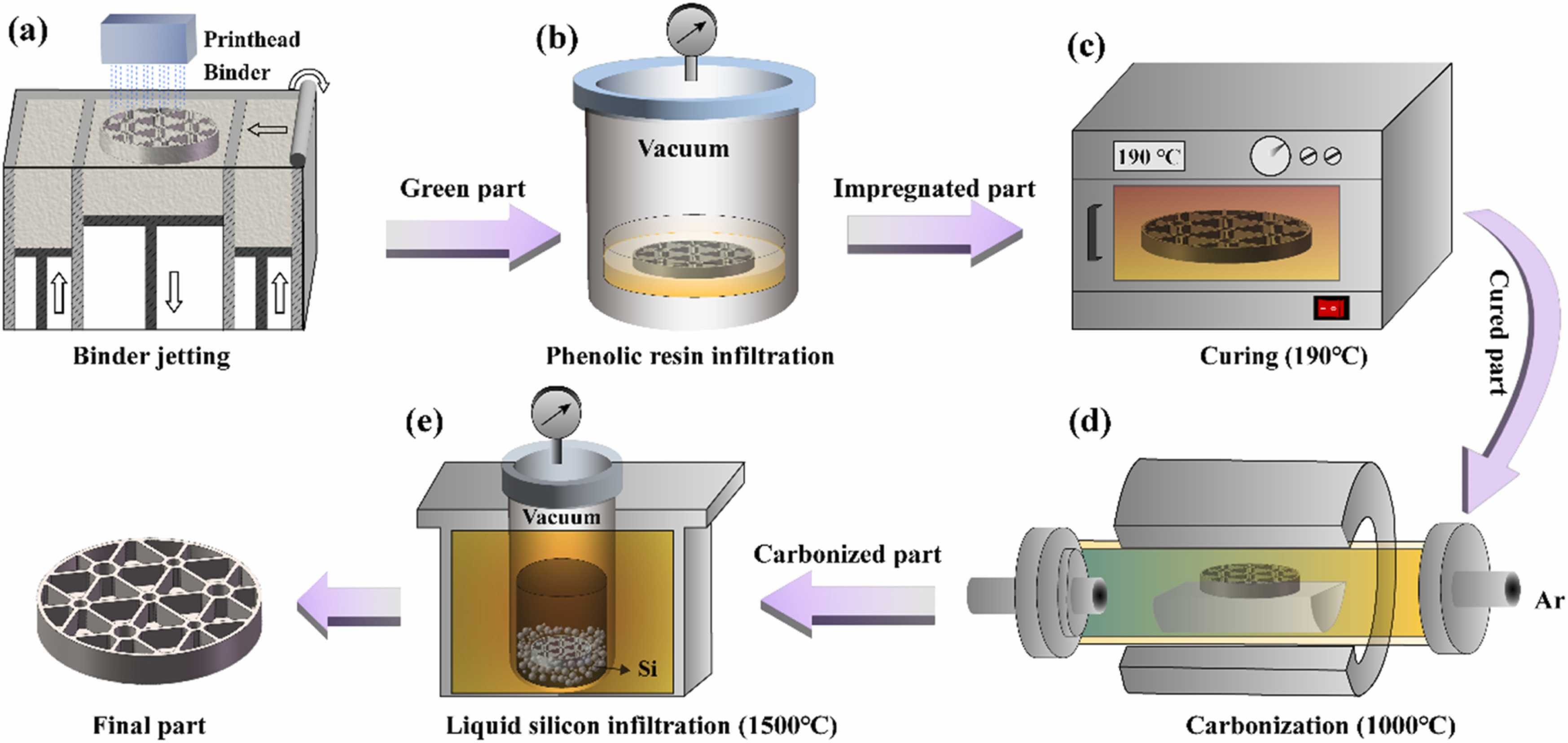·Paper Publications

Indexed by: Journal paper
Journal: Journal of the European Ceramic Society
Included Journals: SCI
Discipline: Engineering
Document Type: J
Date of Publication: 2023-05-25
Impact Factor: 6.364
Abstract: Complex silicon carbide (SiC) ceramic components are difficult to fabricate due to their strong covalent bonds. Binder jetting (BJ) additive manufacturing has the outstanding advantages of high forming efficiency and no thermal deformation, especially suitable for printing complex structure SiC components. This study tried to obtain low silicon content silicon carbide ceramics by binder jetting followed by phenolic resin impregnation and pyrolysis (PRIP) and liquid silicon infiltration (LSI). BJ was used for the SiC green parts fabrication, and the highest compressive strength (7.7 ± 0.3 MPa) and lowest dimensional deviations (1.2–1.6 mm) were obtained with the printing layer thickness of 0.15 mm. Subsequently, PRIP treatments were introduced to increase the carbon content for the following LSI process. As the number of PRIP cycles increased, the carbon density of SiC/C preform increased and the porosity decreased. After the LSI treatment, the final Si-SiC composites processed with 2 PIRP cycles reached the highest flexural strength (257 ± 14.26 MPa) and the best wear resistance. This was attributed to the low residual silicon content (10.2 vol%) and almost no residual carbon. Furthermore, several complex structural components were fabricated using these methods. The preparation of complex components verifies the feasibility of BJ and LSI for manufacturing high-strength and high-precision SiC ceramics. Besides, this work hopes to provide technical guidance for the preparation of complex SiC composites in the future.
Links to published journals: https://doi.org/10.1016/j.jeurceramsoc.2023.05.038
-
Pre One::
316L-toughened porous Al2O3-based ceramic functionally graded materials using binder jetting
-
Next One::
Systematic analysis of distinct flow characteristics and underlying microstructural evolution mechanisms of a novel fine-grained P/M nickel-based superalloy during isothermal compression
